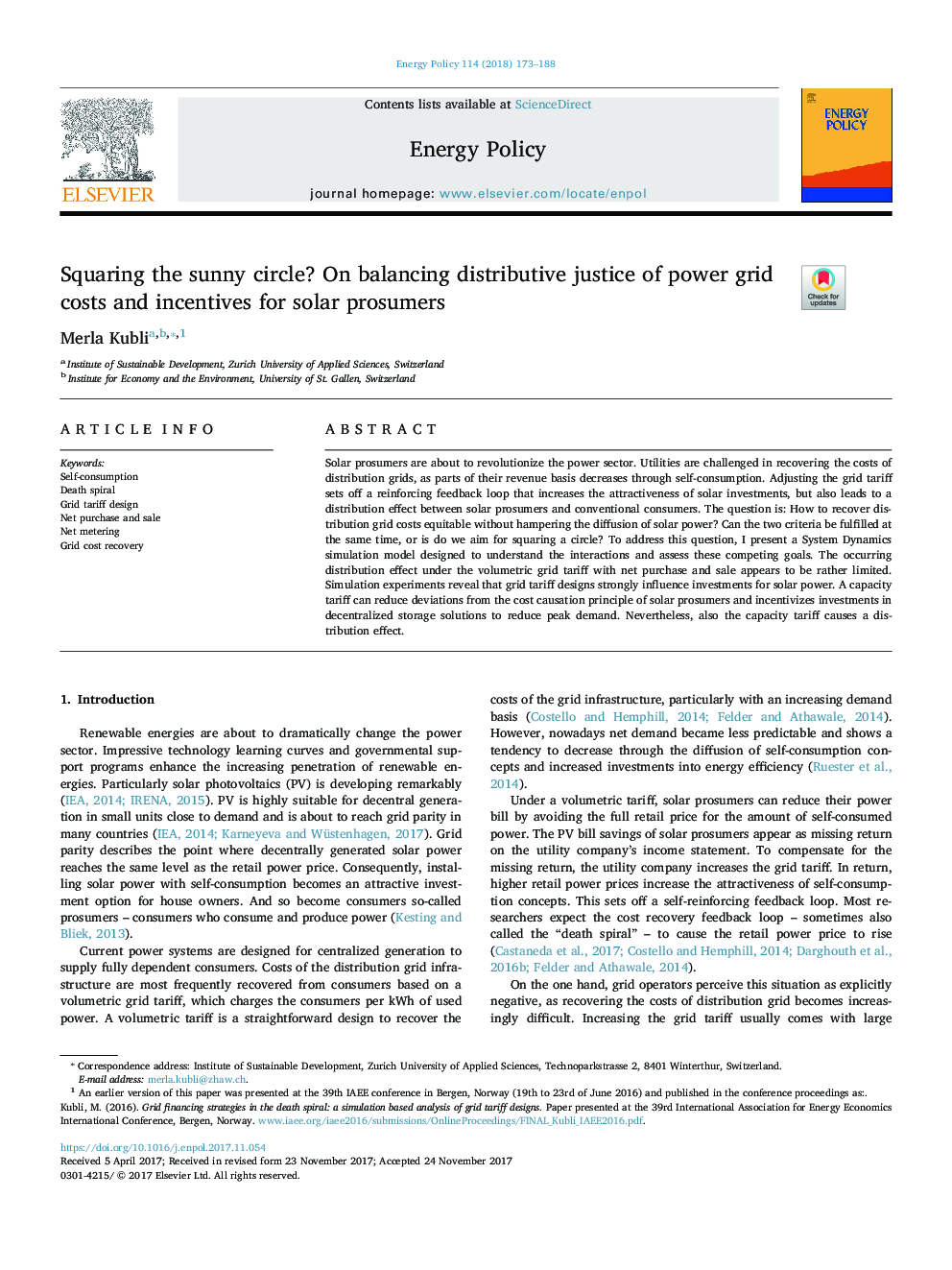| Article ID | Journal | Published Year | Pages | File Type |
|---|---|---|---|---|
| 7397592 | Energy Policy | 2018 | 16 Pages |
Abstract
Solar prosumers are about to revolutionize the power sector. Utilities are challenged in recovering the costs of distribution grids, as parts of their revenue basis decreases through self-consumption. Adjusting the grid tariff sets off a reinforcing feedback loop that increases the attractiveness of solar investments, but also leads to a distribution effect between solar prosumers and conventional consumers. The question is: How to recover distribution grid costs equitable without hampering the diffusion of solar power? Can the two criteria be fulfilled at the same time, or is do we aim for squaring a circle? To address this question, I present a System Dynamics simulation model designed to understand the interactions and assess these competing goals. The occurring distribution effect under the volumetric grid tariff with net purchase and sale appears to be rather limited. Simulation experiments reveal that grid tariff designs strongly influence investments for solar power. A capacity tariff can reduce deviations from the cost causation principle of solar prosumers and incentivizes investments in decentralized storage solutions to reduce peak demand. Nevertheless, also the capacity tariff causes a distribution effect.
Keywords
Related Topics
Physical Sciences and Engineering
Energy
Energy Engineering and Power Technology
Authors
Merla Kubli,
